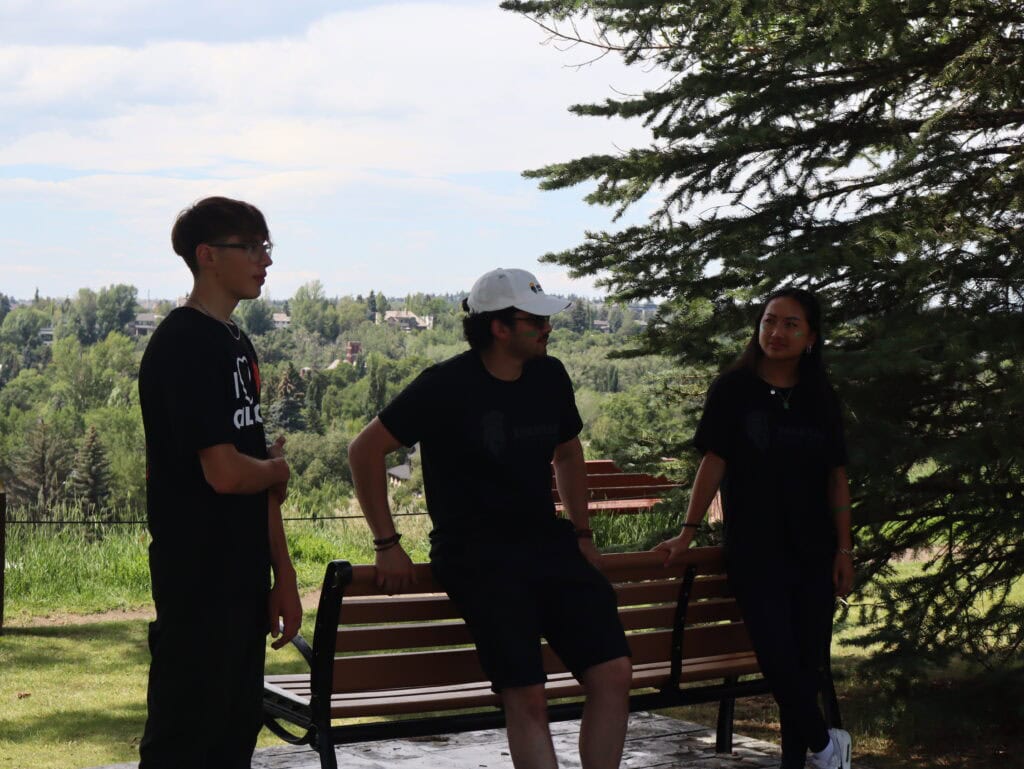
As a young Canadian, I’ve always been someone who cares deeply about the land. I grew up surrounded by nature, and I’ve spent countless hours hiking, camping, and just being outside. That connection to the environment shaped the way I see the world, and it’s a big part of why I decided to get involved in the environmental industry.
I wanted to understand it from the inside out. Not just the challenges, but the opportunities. I’ve always been curious about what happens behind the scenes, and one of the biggest questions I had was “what happens to a well when it’s no longer producing? Where does it go? Who’s responsible? How does it affect the land?”
That curiosity led me to pursue a program in Environmental Technology. Through that journey, I discovered something that surprised me: the process of well abandonment and reclamation isn’t just important, it’s fascinating. It’s this blend of environmental science, engineering, problem-solving, and even collaboration with landowners and communities. At its heart is a vision of restoring the land, making it safe, healthy, and usable again.
I’ve had the chance to gain hands-on experience and connect with people in the field who are truly passionate about what they do. And while there are definitely challenges, regulatory hurdles, public misunderstanding, and complex site conditions, there are also huge opportunities.
We can make these processes more transparent, more efficient, and way more engaging for the public. This is one area of the energy industry that deserves more attention, and I’m excited to be part of the generation that helps bring it forward.
First comes abandonment, and no, it’s not as simple as just walking away from it. If a well has been inactive for a while, there’s a point where it legally has to be permanently shut down. That process is called cut and cap, and it’s kind of the environmental world’s version of putting a site to bed properly. The well casing is cut deep below the surface, and then it’s sealed with cement and a special steel plate that vents any lingering gas safely. That seal is crucial because it protects groundwater, the surrounding ecosystem, and prevents future leaks.
But plugging a well is just the beginning.
After that, environmental professionals step in to start assessing the land. This is where things get investigative; we look at the site’s entire history in what’s called a Phase 1 Environmental Site Assessment. It’s kind of like piecing together a puzzle: we go through old records, aerial photos, and even interview landowners to see if there’s any hint of contamination. If there’s even a whisper of something suspicious, we take it to the next level.
That next level is a Phase 2 ESA, soil and water samples are collected and tested in labs to confirm whether any contaminants are present, and if so, how bad the situation really is. I remember seeing the process firsthand and thinking, “This is what real environmental problem-solving looks like.” It’s science, yes, but it’s also about taking responsibility and doing the right thing.
If contamination is confirmed, then we enter the remediation phase.
In Alberta, one of the most common approaches is what they call “dig and dump”, which sounds simple, but it’s actually very technical. The impacted soil is carefully excavated, tested again to ensure nothing is missed, and then transported to an approved disposal site. It’s not glamorous work, but it’s absolutely essential. You can’t rebuild healthy land on a damaged foundation.
And once the land is clean? That’s when reclamation begins, and to me, this is the most hopeful part of the whole journey.
The goal is to return the land to its original state, or sometimes even better. We remove gravel and re-shape the land, spreading topsoil and subsoil that were stored earlier. Then we replant with native species or crops, depending on what the land was used for before the well was drilled. There’s something so powerful about watching a site go from industrial to natural again. It’s like the land takes a deep breath and starts to heal.
But we don’t just plant grass and call it a day. A Detailed Site Assessment is done to check everything, from soil quality to plant health to drainage. If the site passes all the criteria, a report is submitted and a Reclamation Certificate is issued. That certificate is proof that the land is safe, stable, and ready to thrive again.
And even then, the responsibility doesn’t end. In Alberta, operators are still accountable for up to 25 years after closure in case something resurfaces. That long-term commitment is what makes this work so meaningful.
For me, being part of this process isn’t just a job or a career path. It’s a way to give back to the land that’s given me so much. It’s about finding a balance between development and restoration, and making sure that as we grow, we also protect.
This process protects ecosystems, empowers communities, and builds a better future. This isn’t just for companies or governments, but for people like me. And that’s something I’m really proud to be part of.
Sign up for updates about our work at YCR. Please sign up using a personal email and not a work or school email if possible.
"*" indicates required fields